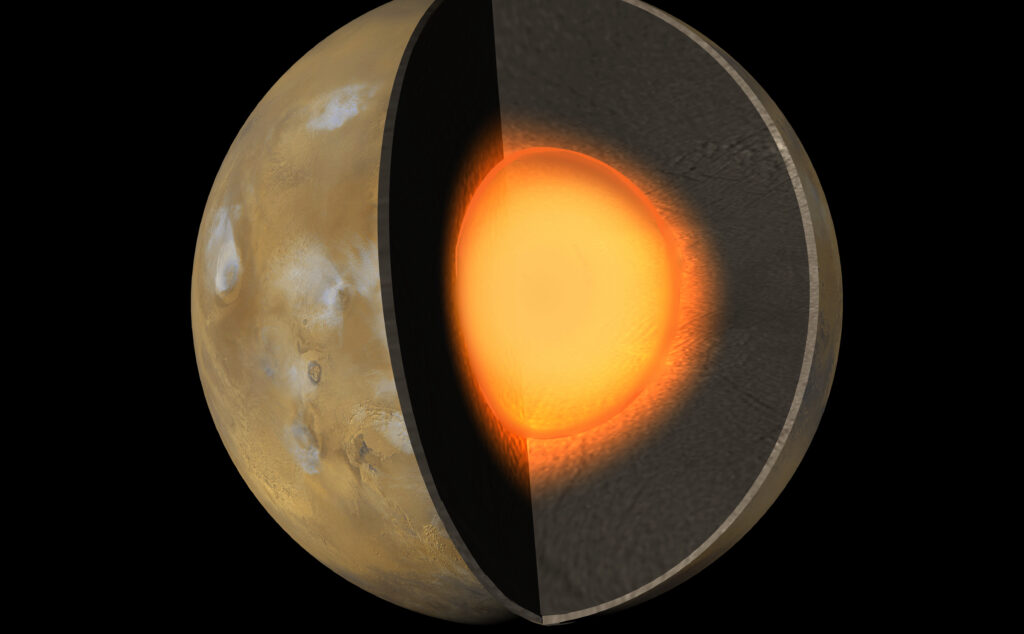Scientists have analyzed seismic data obtained by the InSight spacecraft, which previously operated on Mars. They have concluded that the planet’s core remains liquid, and there are “mass anomalies” beneath its surface.

Testimony from the InSight lander
A group of scientists from Belgium, the United States, France, and Germany recently published a study on the internal structure of Mars. They analyzed seismic data collected by the NASA InSight lander during its mission.
The InSight lander was a stationary platform that landed in one of the most geologically active regions of the Red Planet in 2018 and continued operating until December 2022, when dust covered its solar panels, ultimately ending its mission. During its time on Mars, it collected a significant amount of data on vibrations of the Martian lithosphere.
In particular, it revealed that the Red Planet is not as geologically dead as previously thought. Mars experiences marsquakes from time to time. The analysis of how these seismic waves spread through the planet has allowed researchers to understand what is happening in its bowels.
Liquid Core of Mars
The most significant conclusion drawn by scientists is that Mars has a liquid core, confirming a hypothesis that was previously based on other observations. This finding is essential for understanding the extent of global geological processes.
Currently, scientists interpret marsquakes as manifestations of local geological activity caused by active anomalies beneath the planet’s surface. New researches further confirm the presence of these anomalies. Scientists assume that mass concentrations stretch from Mars’ core to its surface. These inhomogeneities significantly influence the planet’s gravitational field, along with its rotation.
Source: phys.org.

